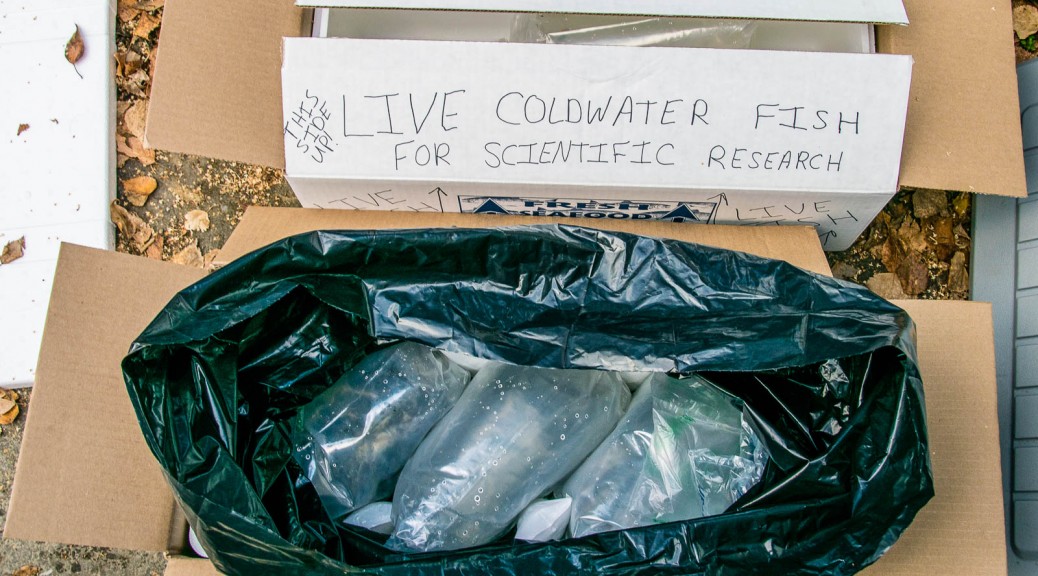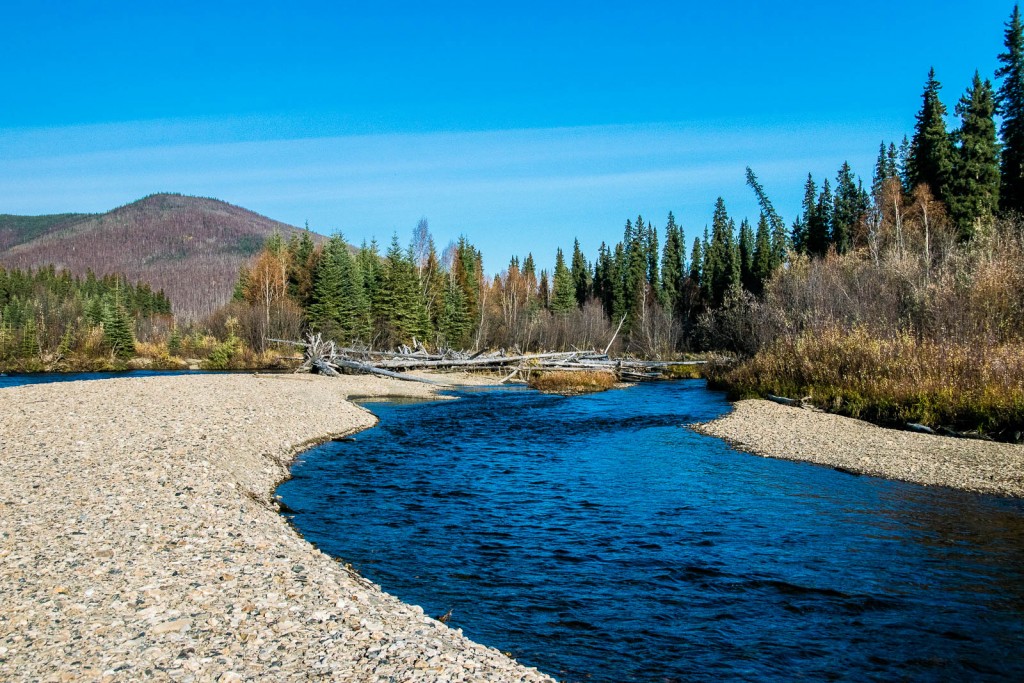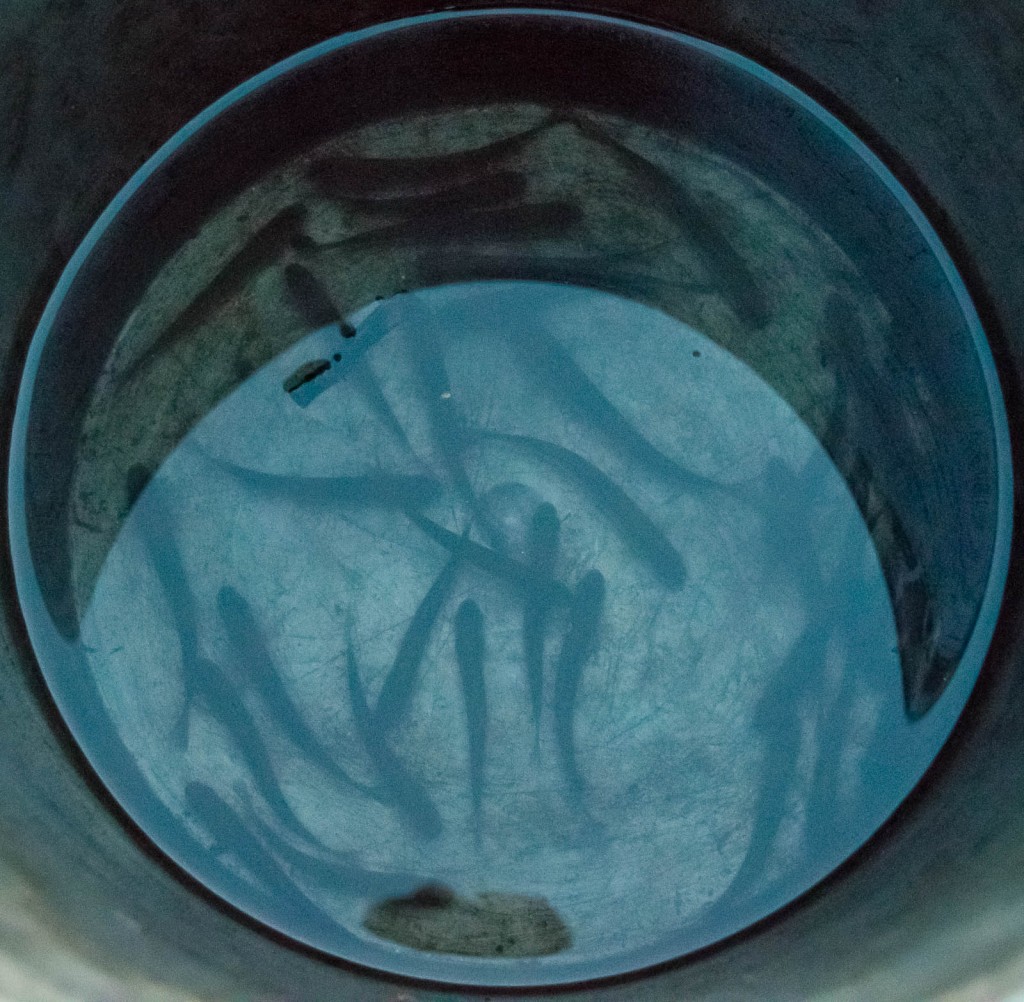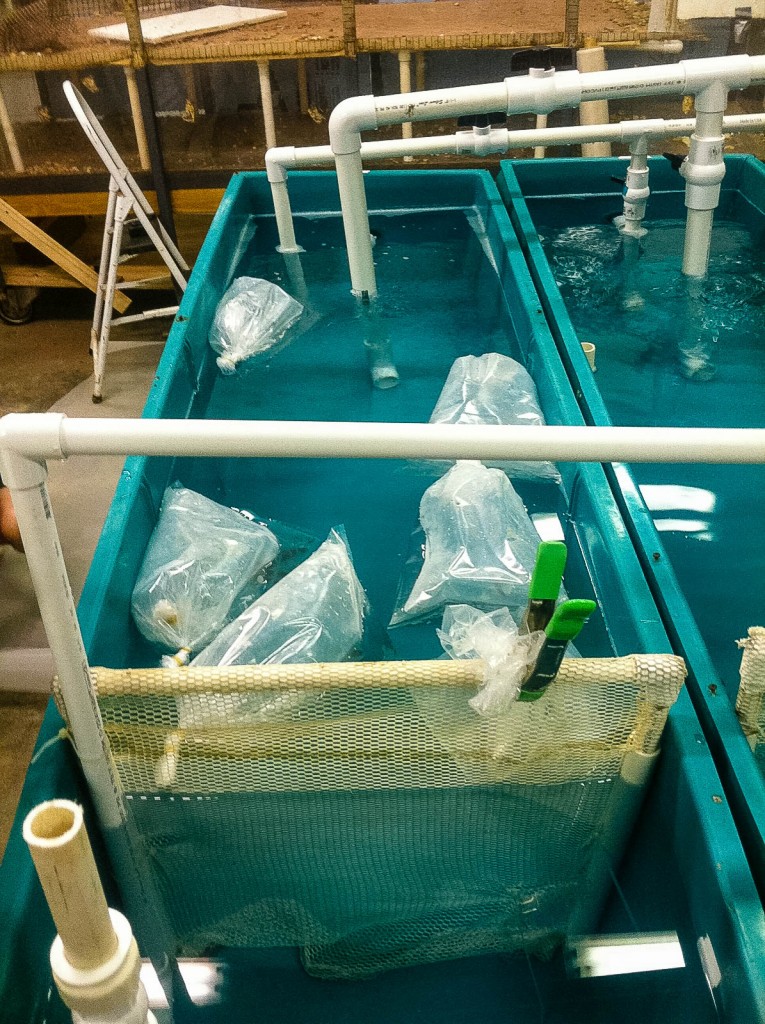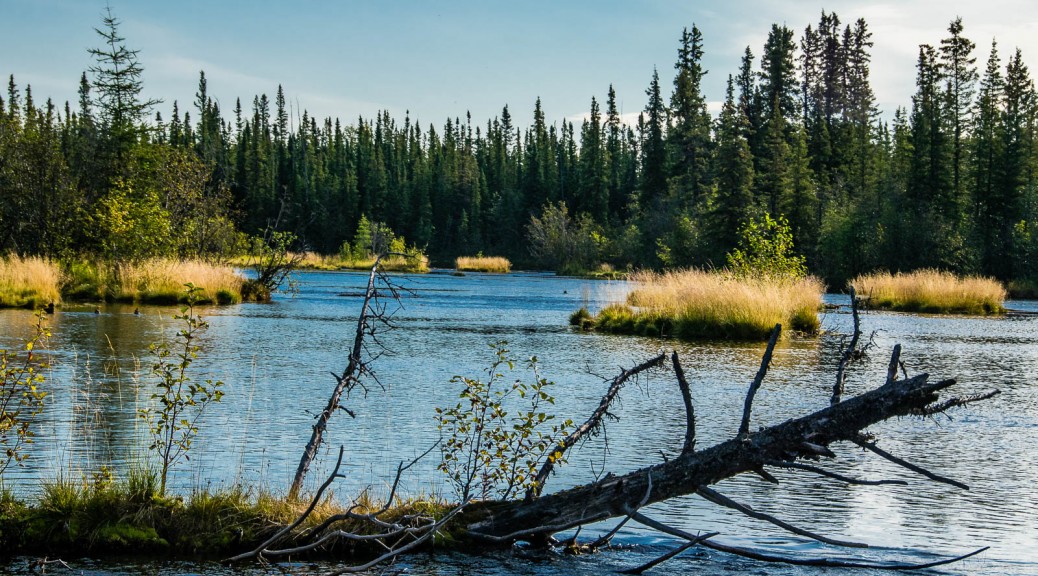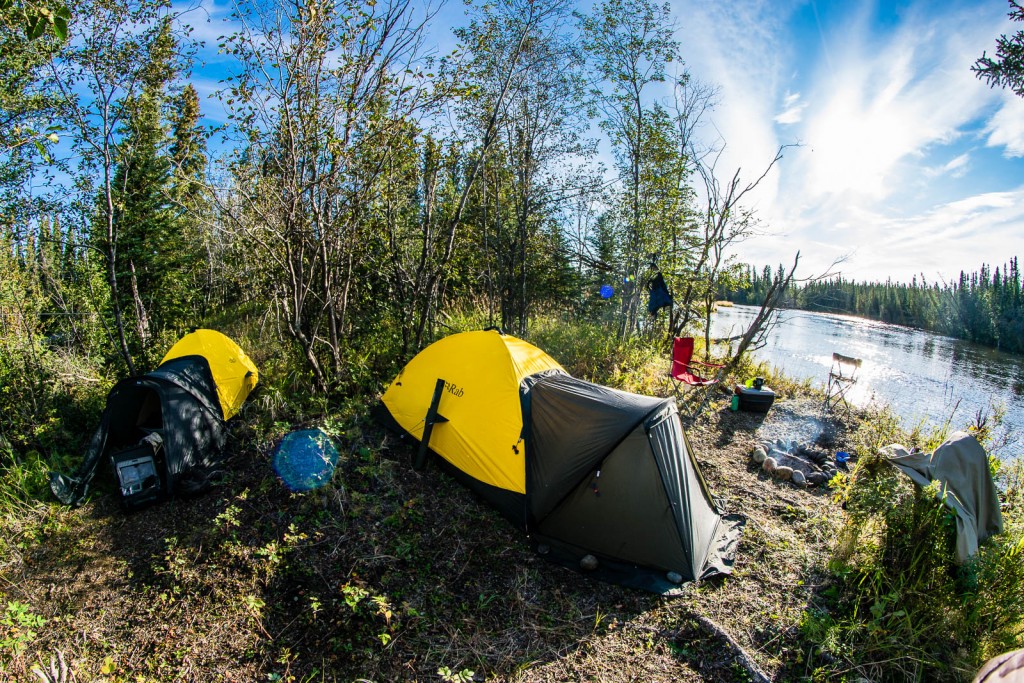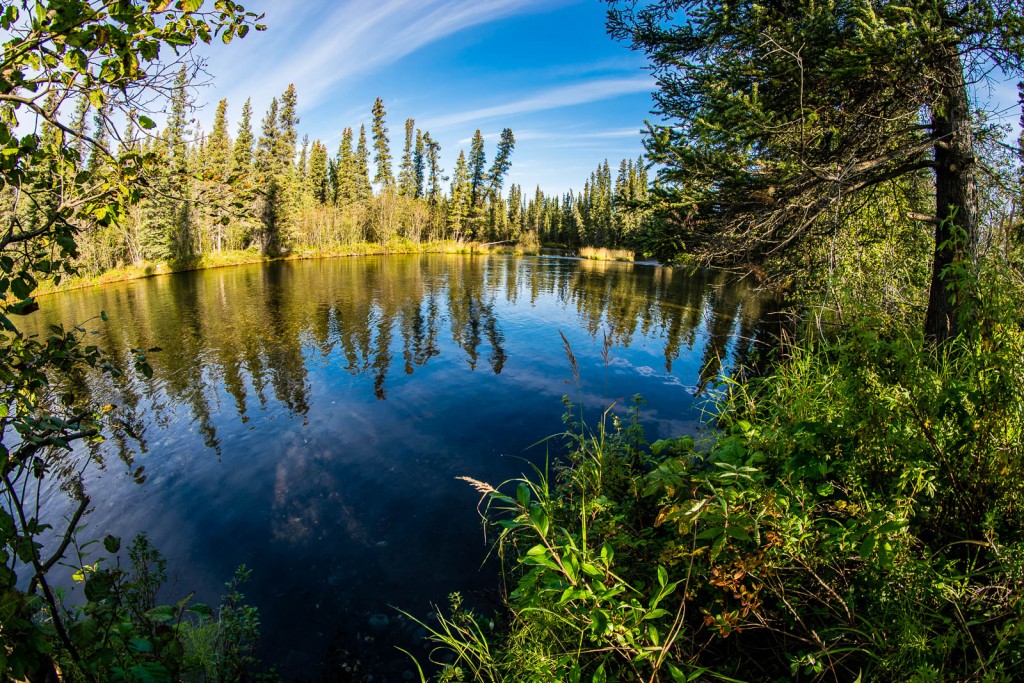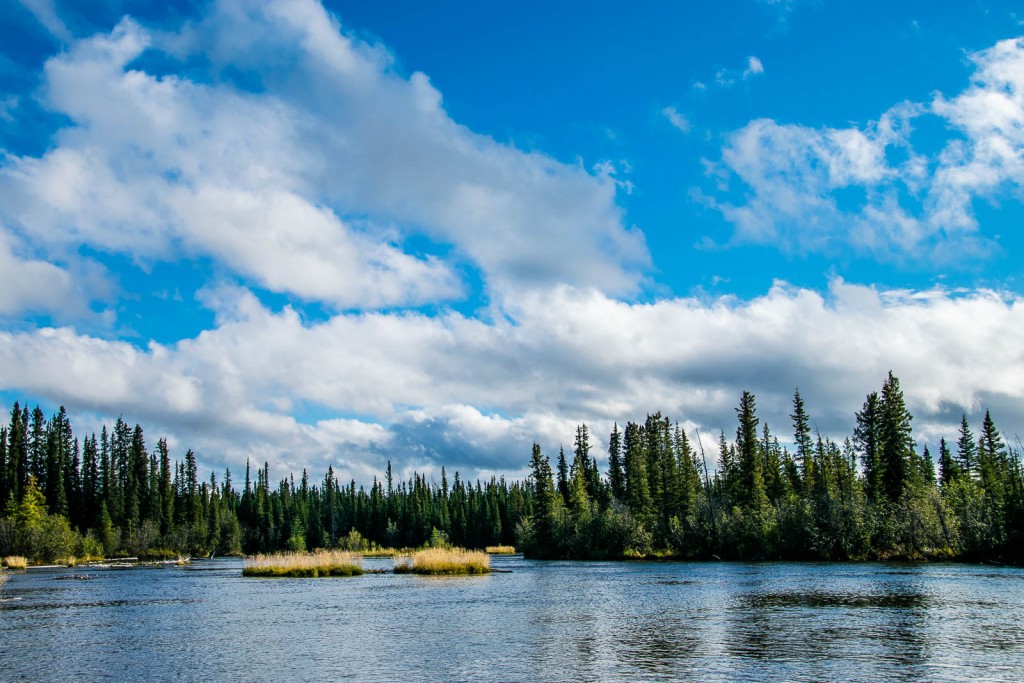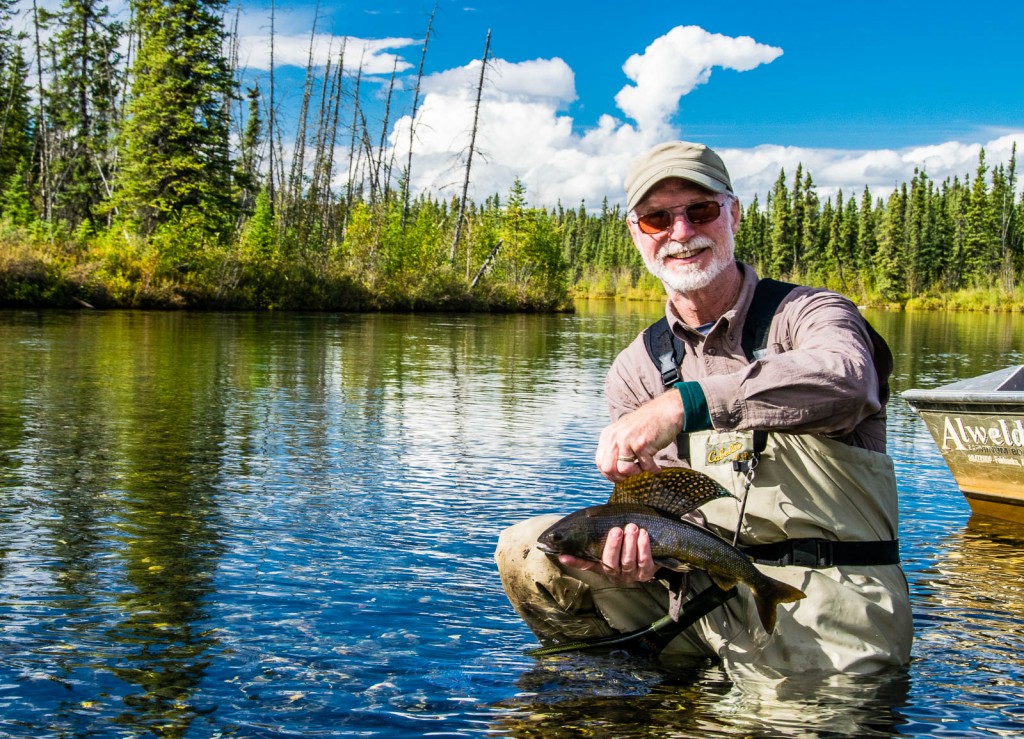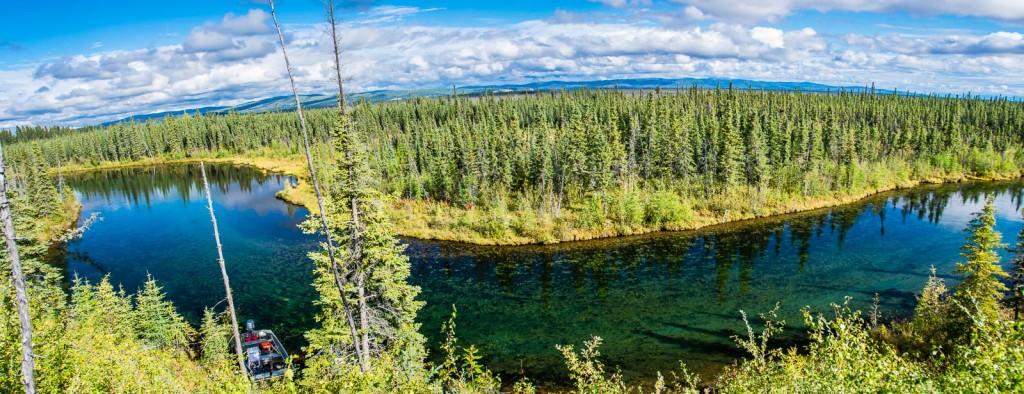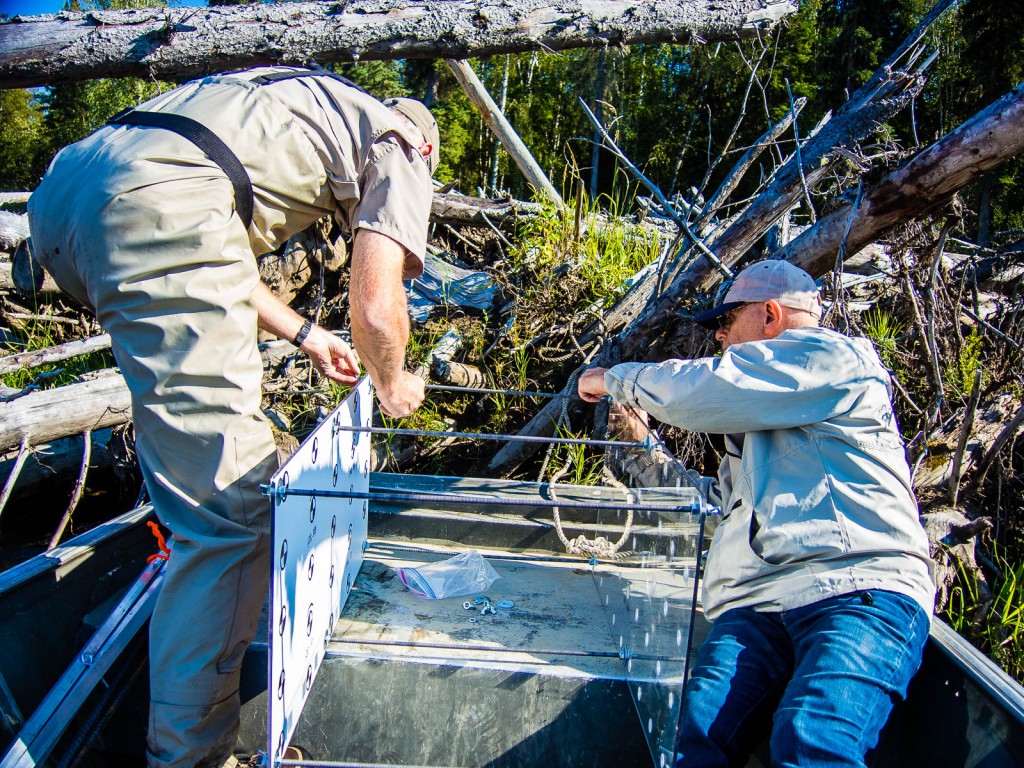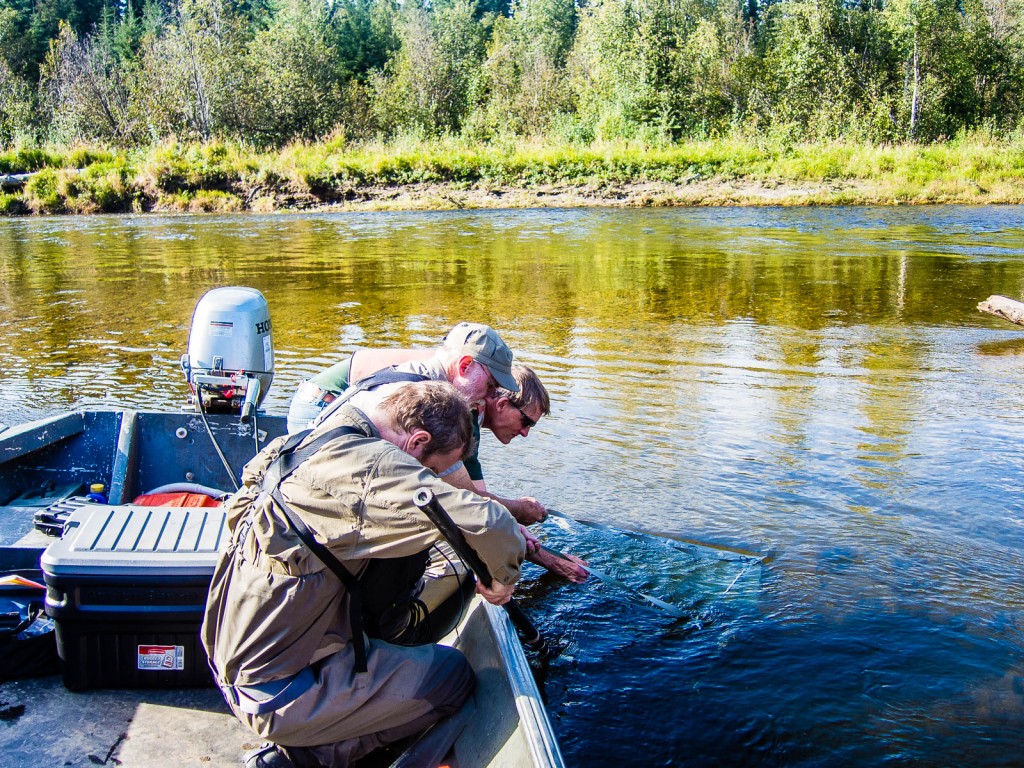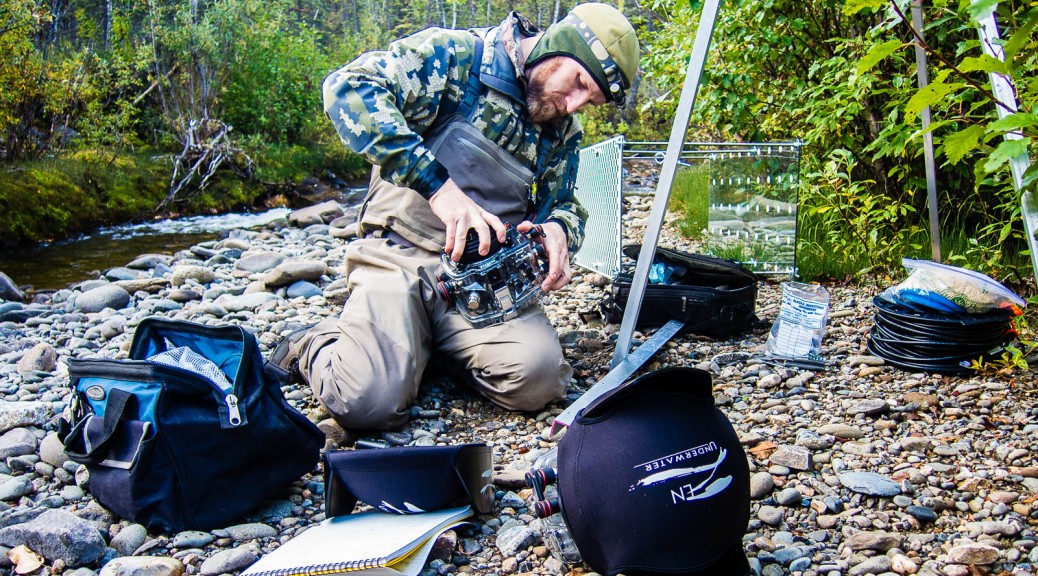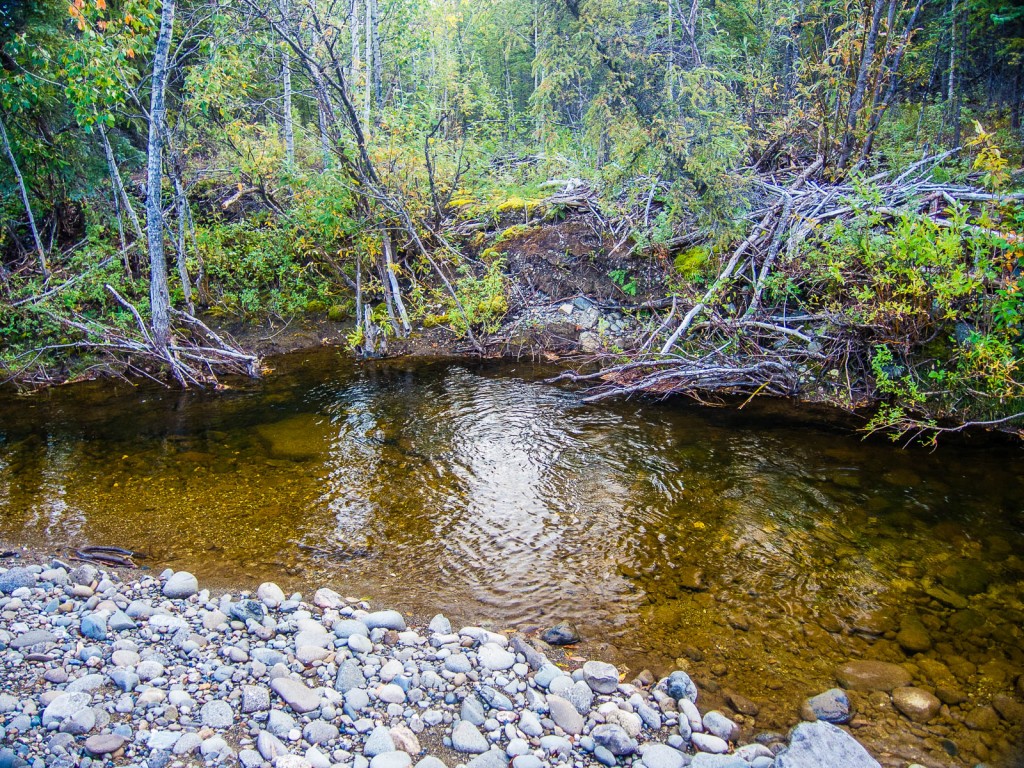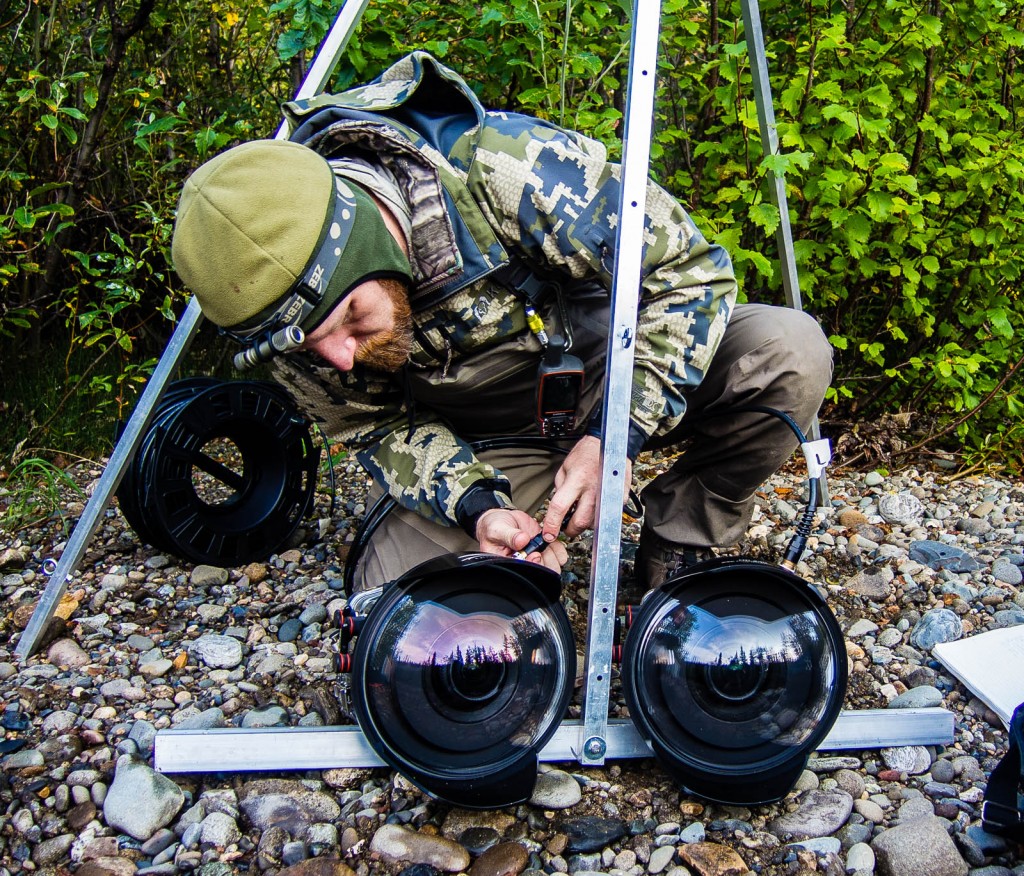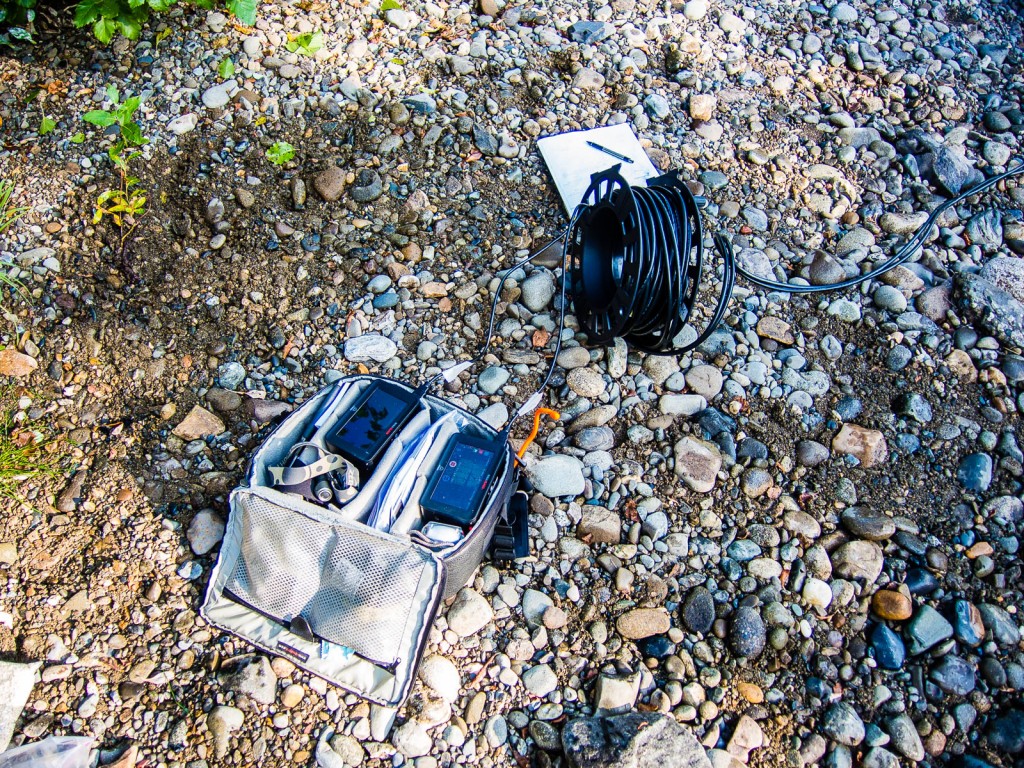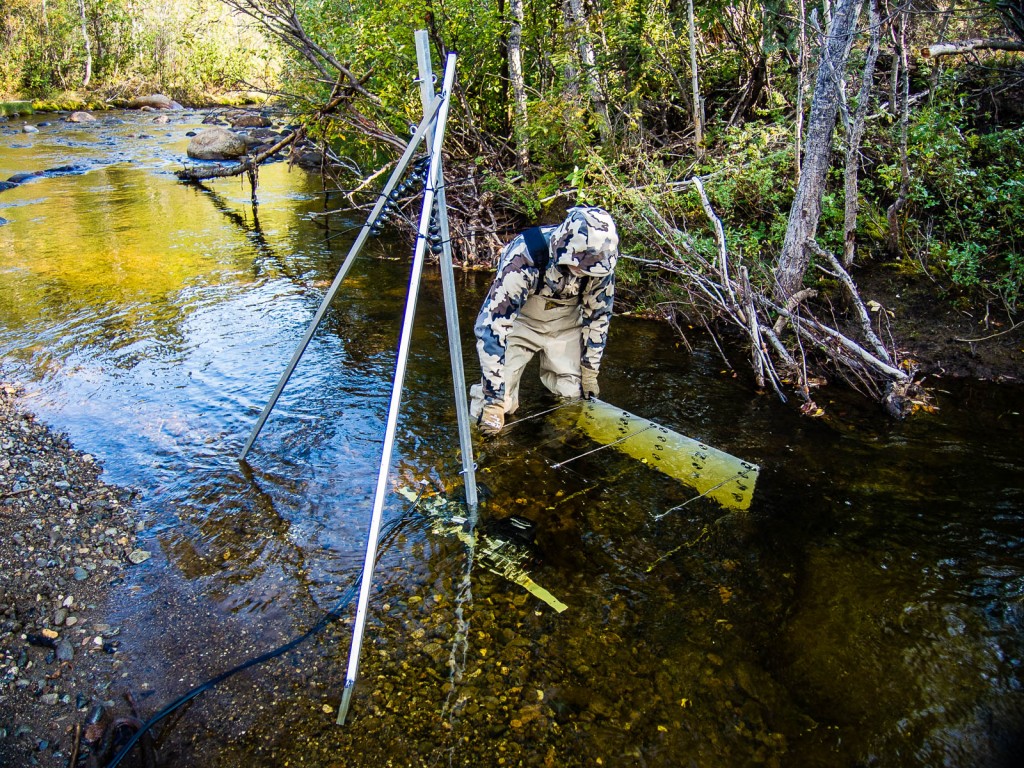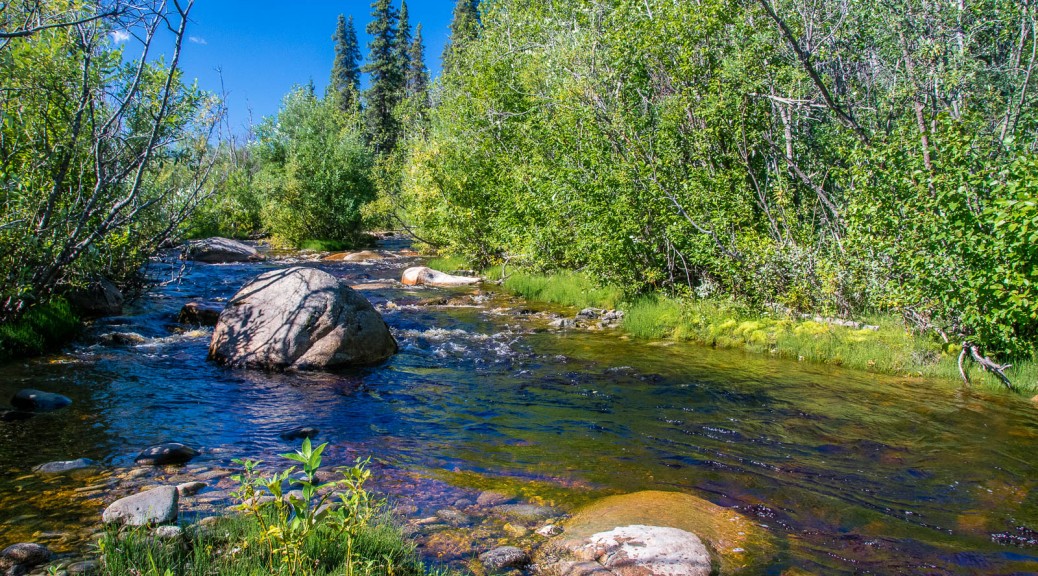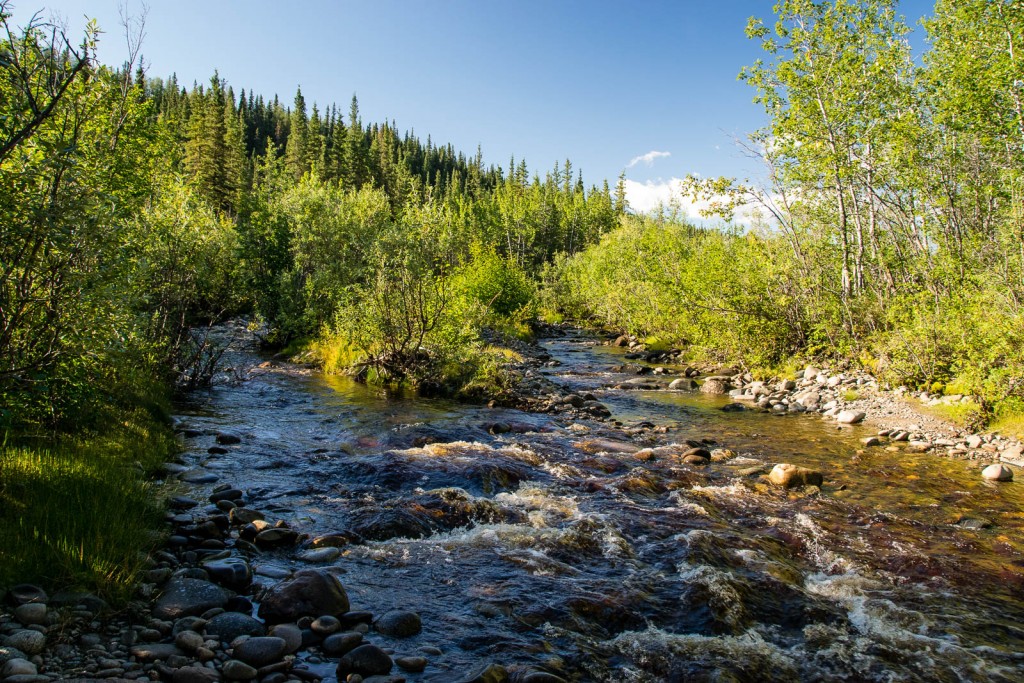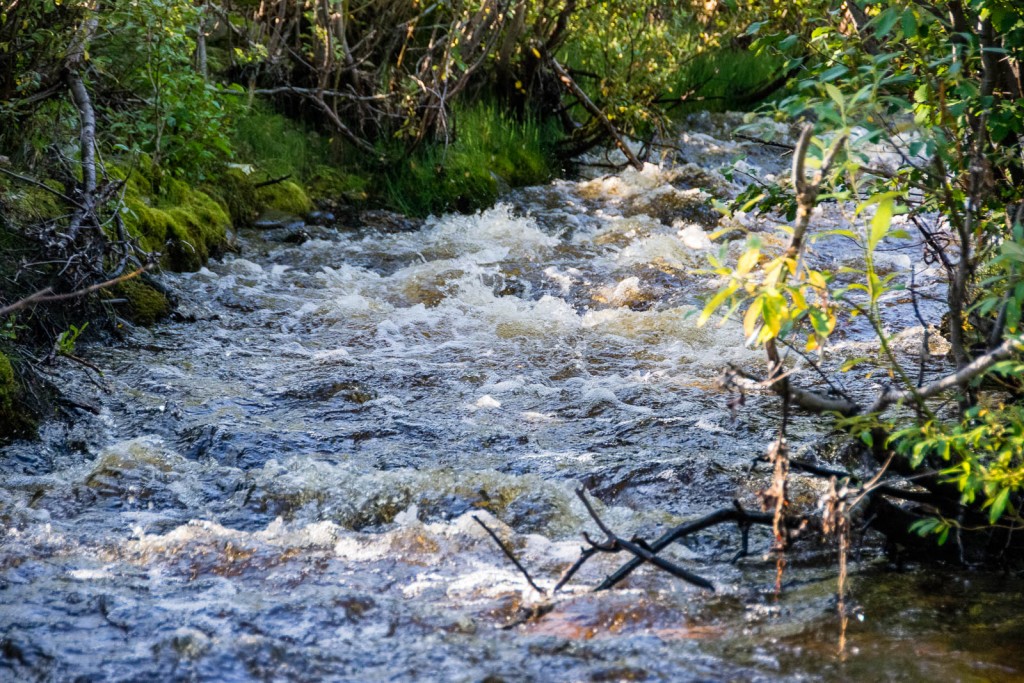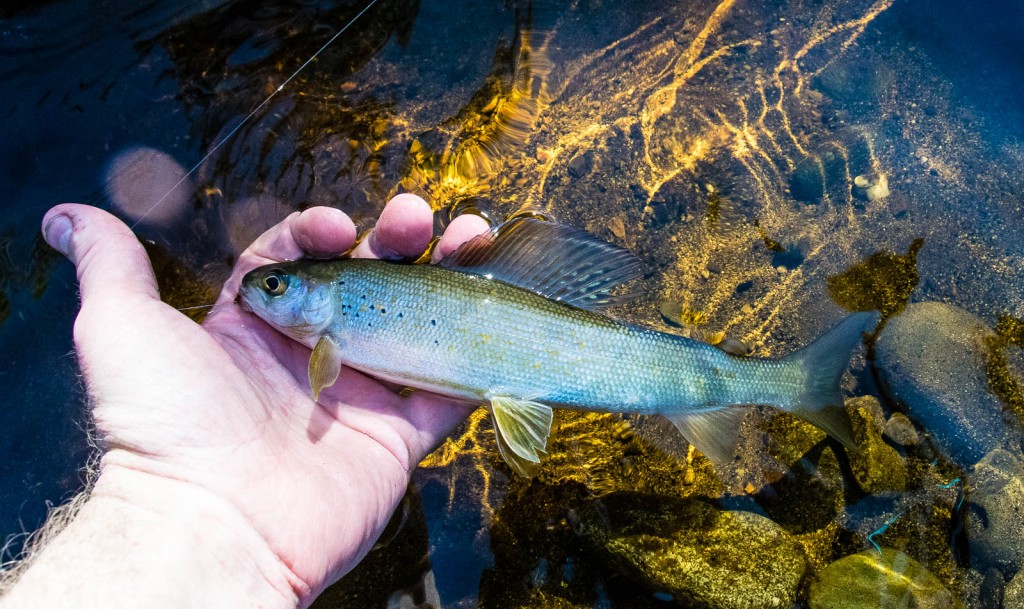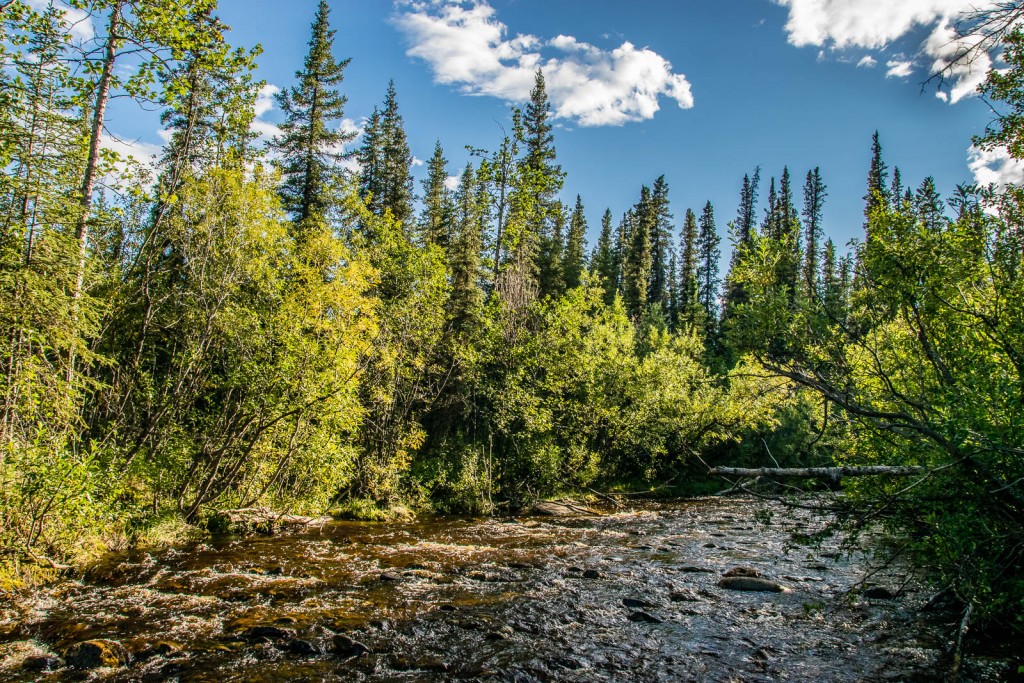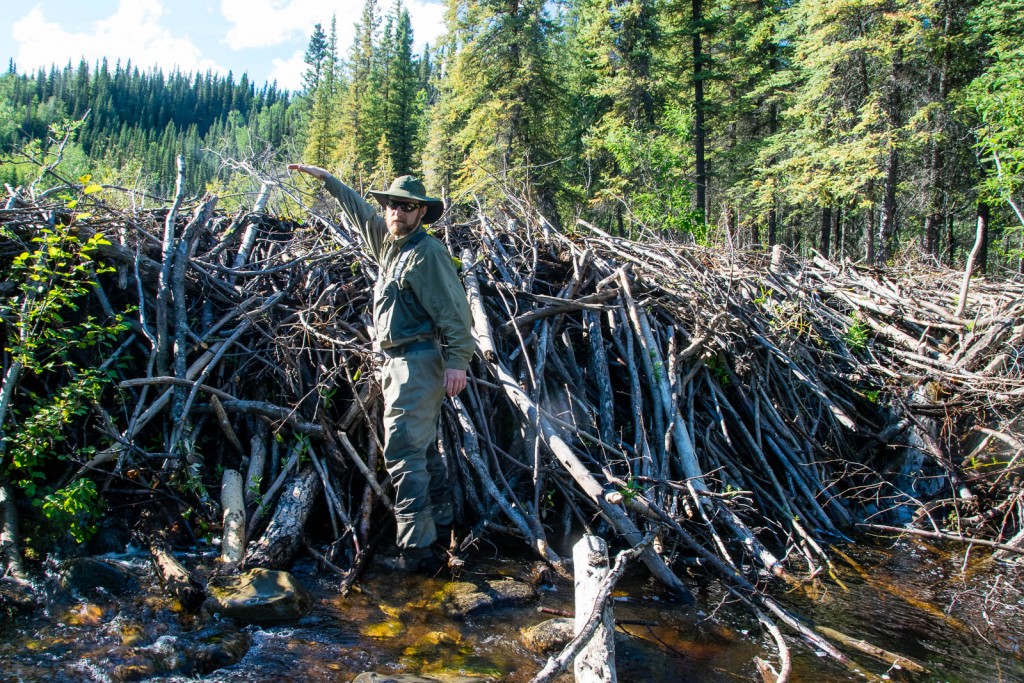Part of our project involves sending a small number of juvenile Chinook salmon to our laboratory in Georgia, where we can test their feeding behavior in a controlled environment varying a single variable, such as water velocity, at a time. (Needless to say, we are in close contact with Fish & Game throughout this process and maintain the required permits in both states.) It was near the end of the Alaska field season before the lab was ready to receive fish.
A driftwood fire helped me and my field assistant (this time, my wife) keep warm while the minnow traps soaked in a logjam where we saw some juvenile Chinook salmon.
It didn’t take long for the traps to gather enough fish.
I packaged the fish very carefully in multiple heavy-duty aquarium bags, filled with oxygen, and surrounded by ice packs in insulated seafood shipping containers. Then I sent them on their way via Alaska Airlines, taking the same route to Atlanta that any human passenger would. In less than 24 hours they were acclimating in their new home.
As of this writing, four months later, they are still alive and well in the lab and providing valuable data in ongoing feeding experiments.

